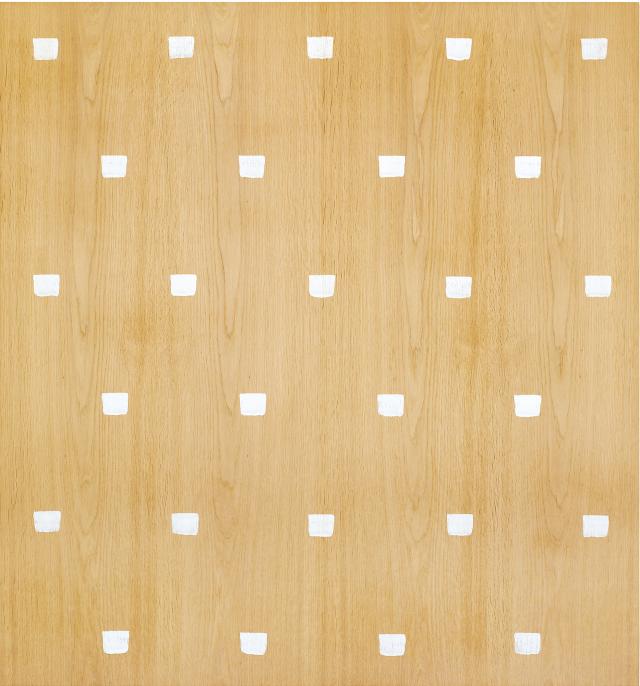Founded in 1966, the BMPT group—Daniel Buren, Olivier Mosset, Michel Parmentier and Niele Toroni—opposed the established pictorial tradition, while asserting rigorous abstraction. Freed from traditional models, they restarted painting “from scratch”, challenging the system that emphasised symbolism and aesthetics in painting.
Although each of the group’s members offered a unique, very simple motif (vertical stripes for Buren, horizontal ones for Parmentier, the circle for Mosset, paintbrush imprints for Toroni), each artist swapped his works for those of the others, with the asserted goal of getting rid of the notions of originality and uniqueness, traditionally linked to the definition of a work of art. BMPT was as ephemeral as it was polemical, only existing for one brief year in which five “Manifestations” took place, earning the group an explosion of media attention.
After the group disbanded in 1967, Toroni was the only member to remain absolutely faithful to his initial working method (Empreintes de pinceau n° 50 répétées à intervalles réguliers de 30 cm). Through the determination of an unchanged protocol based on a repetitive gesture, his work eluded questions of style, composition or virtuosity. Like the 1973 waxed canvas or the 1993 triptych, in which the imprints are spread over three different kinds of wood (pine, beech and oak), he abandoned the boundaries of the canvas and gradually made his mark on all possible mediums. Released from any material constraint, the artist soon invaded a wide variety of spaces (walls, floors, columns), showing them in a new light.
Buren was also quick to deploy his stripes beyond the initial canvas, presenting them in a variety of forms on all kinds of architectural elements, while restricting himself to a stripe width of 8.7 cm. While Parmentier continued his research after a break that lasted a few years (1968-1983), gradually giving up colour, Mosset continued his critical explorations of pictorial practice by various means. His search for autonomy in painting led him to experiment with monochromes, stripes and abstract signs. From 1977 to around 1985, colour as a pure perceptive datum became the sole principle of his work.
Among Mosset’s monochromes, his 1979 yellow canvas made for a unique addition. Acquired by a New York collector whose home Mosset and Andy Warhol visited in 1985, this work is the fruit of a spontaneous, unexpected collaboration between the two artists. After their host encouraged them to undertake a joint project, Warhol—known for playing on his fame by compulsively signing other people’s works—suddenly stood up and added his signature at the bottom of the canvas.









